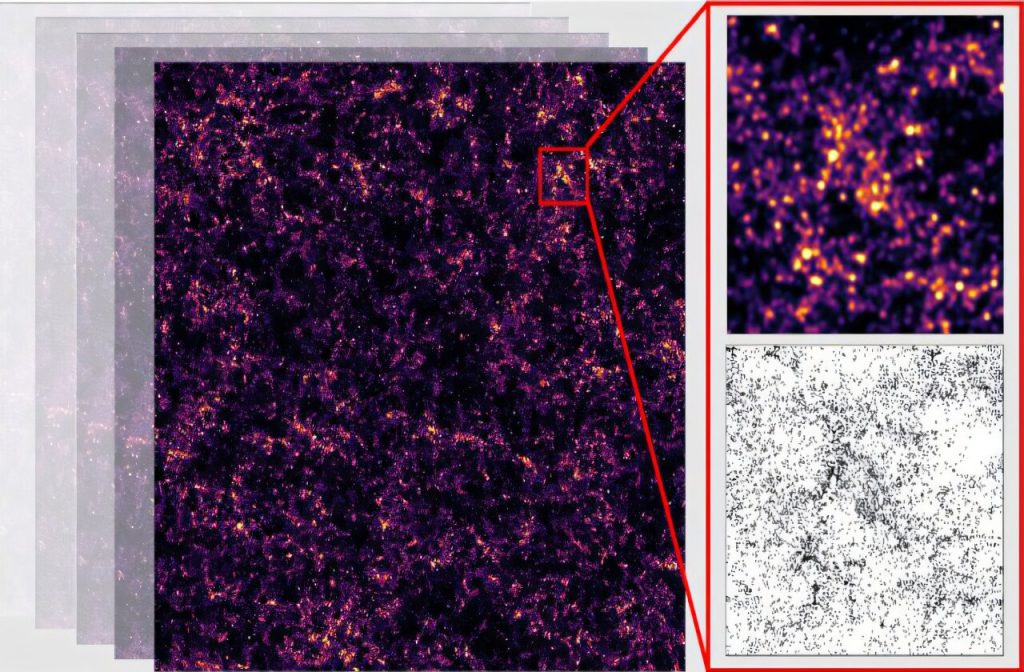
A new view of the in-between years of our universe (Image Credit: Phys.org)
Just like we use photos to reflect on memories of our past, astrophysicists want to use images of far-off galaxies to understand what the universe was like in its juvenile years. But current imaging technology can only reach so far back in history—90 to 95% of the volume of our 14-billion-year-old universe remains unseen.
“We want to measure the full volume of the universe because that gives us the best precision on cosmological physics,” said Kirit Karkare, associate scientist at the Department of Energy’s SLAC National Accelerator Laboratory and a senior member of Stanford University and the SLAC/Stanford Kavli Institute for Particle Astrophysics and Cosmology.
A large-scale understanding of our universe across time is critical. It can inform scientists’ work to learn more about dark energy, dark matter, and the events surrounding the Big Bang. As Karkare and his team more recently realized, faraway and faint galaxies in their teenage years may be detectable with a new technique.
In this context, surveyors of the sky traditionally use a high-resolution telescope. This approach can provide a detailed picture of an individual galaxy. However, its focus is too specific to offer a holistic view of multiple galaxies further back in time. So Karkare and the team are developing a new method known as line intensity mapping. It can offer a lesser-focused snapshot that reaches further back in time.
The images produced are blurred or smeared due to the lower resolution technique. But researchers can still use the clumps of light identified in these images to map early galaxies. These galaxies are known to have been dusty long ago and ideal for star formation.
This technique contains all the relevant cosmology and physics as the traditional approach but will likely be more efficient at mapping the large-scale structure of the universe over a very large volume.
The new type of instrument Karkare is helping to develop is printed onto a silicon wafer about the size of a quarter. Dubbed the South Pole Telescope Summertime Line Intensity Mapper (SPT-SLIM), it will measure light with more sensitivity than ever before. The goal is to better understand the universe‘s mysterious middle years.
The team building SPT-SLIM has been working on the silicon wafer at the University of Chicago for about three years. Next, they plan to install the wafer inside the South Pole Telescope, which is scheduled to begin collecting data during Antarctica’s summer season this year.
Provided by
US Department of Energy





